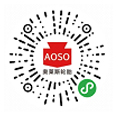
Crane tyres are important safety parts of cranes. Almost all vehicle driving performance is related to tyres. Therefore, tyre maintenance should be enforced in conjunction with vehicle maintenance. The classification and cycle of tyre maintenance are the same as those of vehicle maintenance, which is divided into daily maintenance, primary maintenance and secondary maintenance. Here are some notes for the latter two grades of maintenance:
1. The primary maintenance tasks for crane tyres:
-
Tighten the tyre nut, check whether the valve is leaking, whether the valve cap is complete, and if parts are found to be damaged or missing, they should be repaired or supplemented immediately;
-
Dig out the stones and debris in the heavy duty tyres and patterns. If there are deep holes, use raw rubber to fill them. Especially for radial truck tires, if they are not repaired in time after the stab wound, water vapor may enter the carcass to rust the steel cord, causing early damage;
-
Check the tyre wear, if there is abnormal wear, drumming, deformation, etc., find the cause and eliminate it;
-
If you need to inspect the inside of the cover tyre, it should be disassembled and repaired in time if there is any damage;
-
Check whether the tyre match and the rim, retaining ring and lock ring are normal;
-
Check the tyre pressure (including spare tyre), and inflate tyres according to the standard;
-
Check whether the tyre is scratched with other parts, whether the spare tyre frame is intact and fastened, and if something does not meet the requirements, it should be eliminated;
-
If necessary (such as severe unilateral eccentric wear), a tyre transposition should be carried out to keep the abrasion of tread pattern uniform;
2. The secondary maintenance tasks for crane tyres:
In addition to the operations of the primary maintenance, the following items should also be carried out:
-
Remove the crane tyres, and measure the wear, circumference and cross-sectional width of the tread pattern according to the tyre standard, as the basis for transposition and matching;
-
Tyre disassembly inspection:
① Whether there are internal injuries, delamination, bulging and deformation in the crown, shoulders, sidewalls and insides of tyres;
② Whether the inner tube and pads are free of bite, wrinkle, and whether the valve mouth and valve core are intact
③ Whether the rim, retaining ring and lock ring are deformed or corroded, and they should be painted as appropriate;
④ Whether the rim bolt bearing hole is excessively worn or cracked;
-
After removing the fault found in the disassembly inspection, install and inflate tyres;
-
Transposition of tyres should be carried out according to regulations;
-
If tyres are found to have abnormal wear or damage, the cause should be found out and eliminated.
 E-mail: tyre@aolaisi.com.cn
E-mail: tyre@aolaisi.com.cn Tel: 0714-3509761
Tel: 0714-3509761  Language
Language 




